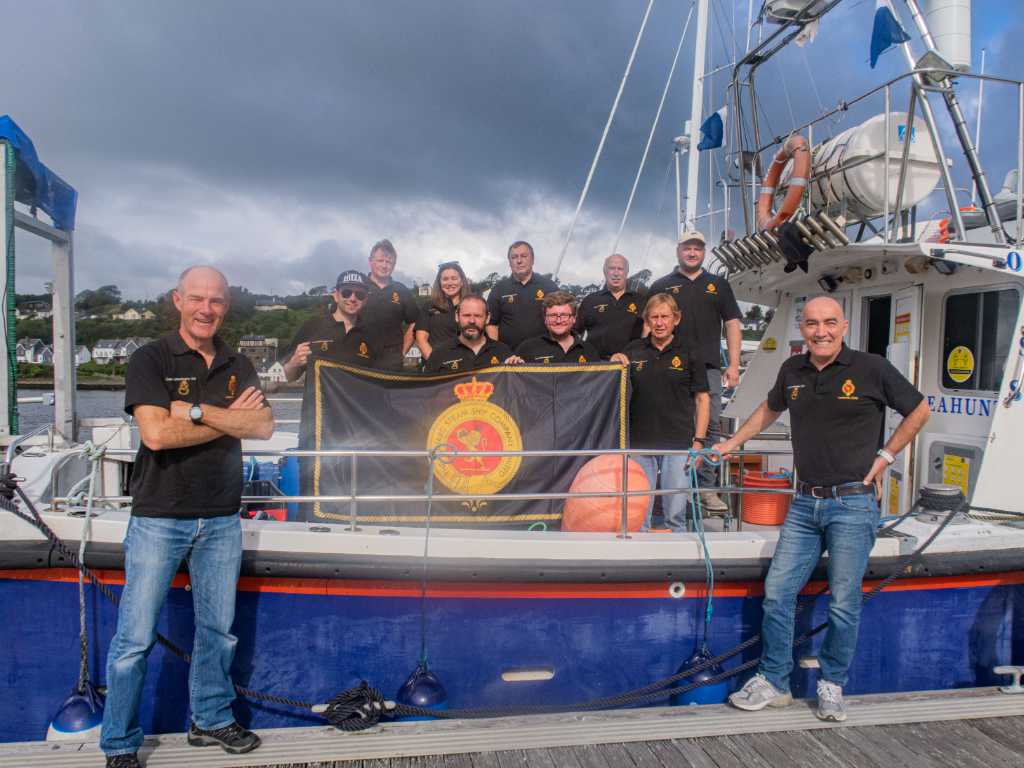Sunday 31st Aug 2020 saw the last dive of this year’s expedition to Lusitania by Project 17.
We had been on site for a total of 15 days and carried out a total of 7 dives, with bottom times between 30 and 65 mins, resulting in run times of between 3 and almost 6 hours.
At the outset, as on every year, Steve Sanders came over a few days early from Teeside to assist with the logistical support and the packing of all the equipment required for the dive team.
These logistics, involved
3 x 50 Litre J Size Cylinders of Helium
3 x 50 Litre J Size Cylinder of Oxygen
2 x 50 litre J Size Cylinders of air pumped to 300 bar.
3 deep shot lines,
1 Trapeze with 35m lazy line.
2 x MPS Gas Booster Pumps
2 x Coltri 300 Bar Compressors
This was our fourth year that Project 17 have been on site and it was the first time where we turned up and went diving the next day.
It was also the first time where we had to prepare risk assessments and method statements for the dive team to follow when they were not in the water, due to the potential risk of Covid-19.
Some 14 days (at time of writing) since we;ve returned home, everyone is Covid free.
For three days, we had the best diving conditions that we had experienced to date, with the visibility in the shallows at around 25m, and at least 15m on the wreck. With these conditions, it allowed team members using DPV’s to travel stern to bow and back, all of which has been video recorded. We believe that this is the first time that this has been achieved on Lusitania.
It was around February that news began to filter through where some key team members advised that due to the Covid pandemic and its impact that they would be unable to make it. Between that date and July we received news that although it was not definite, there was a possibility that we could host up 9 Team members, 4 of which were Core Members from Day 1.
This news was devastating to hear, however the possible loss of such valuable team members made us all more determined than ever that the Expedition would continue and we would achieve our objective.
It was the general consensus amongst us that when a project is halted and the momentum grinds to a halt, like a train pulling out of a station, it takes time to get up to speed.
This year’s work where we concentrated on the stern, saw photogrammetry and data collection relating to a full ecological survey carried out by Dr Clare Fitzsimmons and data collection which will be used for the photogrammetry model of the stern section.
The rest of the team concentrated on data collection using photographs and video to carry out comparisons on imagery supplied by Stuart Williamson and we are hopeful that with the imagery supplied, we can make use of this within the photogrammetry model.
Whilst still early days yet as we start to process the data, it is very obvious that as the stern of the wreck now rises some 18m off the seabed meaning areas of it have collapsed.
One area that has collapsed allows access to the engine room, which now lies open and exposes various levels below within.
Since the sinking of the Lusitania, one of the main reasons for the huge loss of life was the fact that the ship sank in only 18 minutes, due to a second explosion.
Over the past 100 years, it has been said that the possible cause of the second explosion was the accumulation of coal dust that ignited and subsequently caused the ships boilers to explode.
The feeling within the team presently is that if it was possible to carry out an examination of the engine room and the boilers, it could be possible that if the boilers are intact then this would disprove the theory of the coal dust theory.
Over the course of the 7 days diving everything went perfectly, with not even a report of one diver even having single issue with any of either the electronic Rebreathers or camera equipment.
On behalf of project 17, we would like to thank all the members of the Lusitania Old Head Museum who looked after us during the day we spent out at The Old Head, The Underwater Archaeological Unit & all the divers, researchers and crew for making this year’s exploration to R.M.S Lusitania, the success that it was.
Now all remains to be done is to gather all of the material and start to get it into a format where the information and data can be processed into a useable format, which will take time

